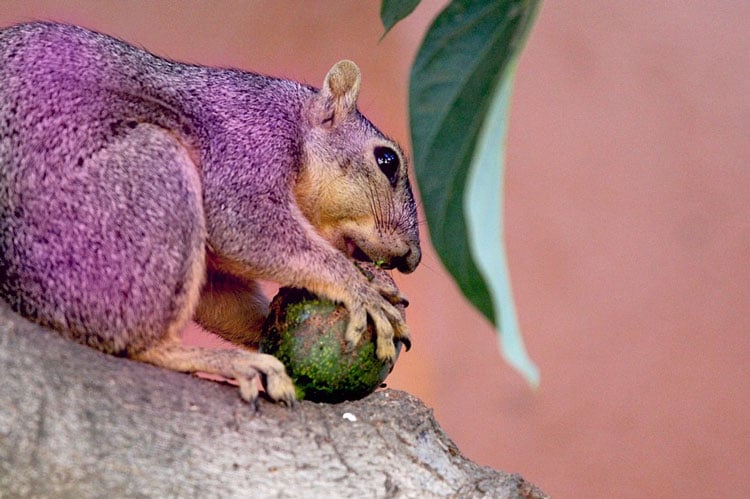Scientists stumble upon flying squirrel that glows hot pink in UV light
Researchers Allie Kohler and her team at Northland College in Ashland, Wisconsin were using a UV light to study lichen in a Wisconsin forest when they discovered something else entirely—a hot pink glowing squirrel.
The chance observation, made possible with the glow of the UV light, was confirmed when 135 museum specimens of the New World flying squirrel were examined and glowed pink under the UV light. Though scientists don’t know why the squirrels glow pink, they theorize that it could be to help them find—or perhaps impress– each other in the dark. The pink glow may also mimic the plumage of owls, which also omit a similar secret glow, to confuse avian predators. Learn more about Kohler’s research here.
Eastern monarch butterfly population rebounded by 144 percent
According to the Center for Biological Diversity, the eastern population of monarch butterflies, which breed east of the Rocky Mountains, reached their highest numbers since 2006. The butterflies overwinter in Mexico where scientists from the World Wildlife Fund Mexico estimate the population by measuring the area of trees that have turned orange by the gathering butterflies.
The 2019 winter count found the monarchs occupied nearly 15 acres of forest, up from just over six acres in winter 2018—an increase of 144 percent. In the mid-1990s, monarchs covered nearly 52 acres of forest. Those numbers fell to 3 acres in 2014. Scientists estimate that 15 acres is the threshold to be out of the immediate danger zone of migratory collapse. The Fish and Wildlife Service are considering protecting the butterfly under the Endangered Species Act and a final decision will be issued by a court-ordered June deadline.
U.S. intelligence officials name climate change as a worldwide threat
In its annual assessment of worldwide threats, the nation’s intelligence community warned that climate change poses risks to global stability. The Worldwide Threat Assessment, released Tuesday, the report stresses that climate change may cause global instability because it is “likely to fuel competition for resources, economic distress, and social discontent through 2019 and beyond.” Last Friday, the United Nations Security Council held a discussion to better understand how climate change acts as a “threat multiplier” in countries with vulnerable governance and sparse resources.
In addition to climate change, the 2019 Worldwide Threat Assessment also lists terrorism, cyber crimes, and weapons of mass destruction as a threat to human security.







